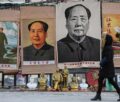What does reality require from fiction?

 Between the Assassinations by Aravind Adiga, New York: Free Press, 339 pp.
Between the Assassinations by Aravind Adiga, New York: Free Press, 339 pp.
By Sandy English
wsws.org
Aravind Adiga’s new book of interrelated short stories, Between the Assassinations, exhibits many of the strengths of his Booker Prize-winning novel, The White Tiger, and fewer of its defects. In the end, however, it still fails—as a whole—to reveal much of what might be new or essential about Indian life.
The White Tiger received critical and popular attention in part due to its exposure of India’s stark social conditions. The novel, Adiga’s first, plausibly depicts the conniving brutality of the nation’s landlord and bourgeois classes, the corruption of its bureaucrats and police, and the horrifying poverty and ignorance that plague hundreds of millions of workers and farmers.
The White Tiger is told in the form of a series letters from an entrepreneur living in Bangalore named Balram Halwai to Wen Jiabao, the premier of China. Identifying himself with what he sees as the accomplishments of Chinese capitalism, Balram narrates the story of his own rise from despised, lower-caste servant to successful entrepreneur who imagines he has his finger on the pulse of the world economy.
Side by side with rounded and believable portrayals of ordinary Indians, there is an artificial inflating of their absurdities, mistakes, and weaknesses, not only by Balram, but by everyone involved.
By the end of the novel, Adiga has not questioned the validity of Balram’s assumptions. In fact, the novel does not question the capitalist enrichment of a small layer in China, and seems to envision the same for India, apparently despite and through the torment and degradation of most of its people.
The White Tiger aims at humor, but the tone is flippant by and large, not satirical. Adiga’s attitude toward the limited and selfish aims of his protagonist seems ambiguous. In an interview with the Guardian, Adiga said, “India and China are too powerful to be controlled by the west any more. We’ve got to get beyond that as Indians and take responsibility for what is holding us back,” a sentiment not so terribly different from Balram’s.
The fourteen stories in Between the Assassinations take place in the same fictional city, coastal Kittur in the southwestern Karnataka State, whose capital is Bangalore. Each story’s title refers to a location in the city and the day it takes place over the course of a week.
These tales were written before The White Tiger, and, as in the novel, many of the characters are poor—the children of construction workers, young peasants moving to the city, half-starved delivery men, servants, small store owners, and peddlers. There are figures from other social layers as well: an assistant headmaster, a journalist, a left-wing activist, a factory owner.
“Between the Assassinations” refers to the period of seven years that separated the murder of India’s premier Indira Gandhi in October 1984, by her own Sikh bodyguards, and that of her son Rajiv, a former prime minister, in May 1991 by a suicide bomber from the Liberation Tigers of Tamil Eelam.
In “Day One: The Railway Station,” Ziauddin, a Muslim boy comes to Kittur from the countryside and gets work in a teashop in the city’s railway station. He is popular with the customers and lives in a tent behind the shop. Eventually, he becomes “another of those lean, lonely men with vivid eyes who haunt every train station in India.”
Ziauddin helps a stranger who plays on the real prejudice that the Muslim minority faces in India, and uses Ziauddin to help commit a fully predictable crime. The story never really finds a theme and things end pretty much as they begin.
There are moments in Adiga’s book, however, when the impact of larger, global changes comes through and affects people’s feelings and outlook, as for example in “Day One (Afternoon): The Bunder.”
The Bunder is the manufacturing ghetto of Kittur, close to the sea. The story is about Abbasi, the Muslim owner of a factory that produces embroidered shirts for ballroom dancers in the United States.
He has previously closed his factory because the women he employs are going blind as a result of the detail work involved in stitching, but now Abbasi has reopened it because “a man has to eat.”
He is trying to bribe officials into granting him a license. This involves a ritual of lying and self-abasement, and he despises it. Abbasi is an honest man, known among his friends to be “prone to regular outbreaks of idealism.”
Abbasi fights back and scores a victory. However, he is continuing to blind his workers, and there are not many choices and not much to take comfort in.
This is a moving story that shows the compassion being crushed out of people in trying circumstances—and by the world market. Adiga seems to share Abbasi’s frustration that nothing much can be done to change the conditions of life in Kittur. The story ends with a tranquil image of the city’s harbor, and a sense of distance.
In “Day Two (Evening): Market and Maiden,” Keshava is a poor boy from the countryside. Drought has forced him and his brother to look for work in Kittur with a family member. They find their relative. He puts them to work, and they sleep in a filthy alleyway with other unfortunates.
Soon, Keshava is taken into the service of the local gangster who charges rent for spots in the alleyway. He works for the gangster’s bus company, and becomes streetwise and brutal.
In one scene, the gangster has him go to a rally with a group of boys and shout slogans for a Congress Party member, a lower-caste Hoyka, and an associate of Rajiv Gandhi’s. Keshava rises to the rank of bus conductor, and receives a uniform and a bed. The concern of the gangster is, as we would expect, self-serving. By the end of the story, Keshava literally cannot speak.
The main character of “Day Three: Angel Talkies” is a journalist, Gururaj, who writes for Kittur’s only major newspaper, the Dawn Herald. He has written a well-known article on Hindu-Muslim strife in the city. He tells a police officer who accosts him, “I look for the truth.”
He begins to go out each night to talk to a Gurkha watchman, who knows more than he does about the goings-on in the city. He discovers that his sources about the Hindu-Muslim conflict have played him false, and that a Hindu MP instigated the riots. He tells his editor, “Look here, let’s just write nothing but the truth and the whole truth in the newspaper today. Just today.”
The remainder of the story, unfortunately, is not especially interesting or insightful. Gururaj slides from contempt into insanity. As with many of these stories, the effort to survive, physically or morally, ends in muteness. We tend to feel that Adiga is taking the easy way out from the terrible reality he has presented.
In “Day Four: Umbrella Street” Adiga describes the bitterness and poverty of a cycle-cart driver, Chenayya. A journalist interviews him and his fellows and calculates that they are expending more calories than they take in, and are thus slowly killing themselves. Chenayya lives with a hatred of the rich, and of his fellow drivers.
The driver tries to improve his condition. He is humiliated when he asks for work at a factory. Then he plasters posters around town for the Congress Party, in hopes of being granted a patronage job, but he gets rebuffed there, too. In the end, Chenayya longs for a way to strike out, but cannot find one. He is resigned to his invisibility.
A Tamil construction worker in “Day Four (Afternoon): The Cool Water Well Junction” is in danger of losing his job because he is a drug addict and can’t work. His daughter Soumya and her little brother Raju beg for money to go buy him his dose in the Bunder, some distance away.
The trip is an adventure of minor, everyday horrors: the police slap people, a beggar screams at them to protect his turf, and they find lunch in the trash. The siblings quarrel. When they return home with the drugs, Soumya’s brother informs on her, and she is beaten. Her brother sees her injuries, and is silent.
In Adiga’s final story, the cynicism and flippancy that marred The White Tiger return. In “Day Seven: Salt Market Village,” a devoted member of a small Maoist party, Murali, makes tea for the party leader. Murali is 55 years old and his apartment crammed with the works of Maupassant, Gorky and Chekhov, in other words, remarkable literature, which, of course, bears no relation at all to the sensibility of the Stalinist-type party.
The man is clearly wasting his life. When a widow comes to the party’s headquarters asking for assistance, Murali begins to court her daughter, seeking out a companionship that is missing from his life. But he cannot change this aspect of life anymore than he can change the political conditions in India, and, in fact, his membership in the Communist Party (Marxist-Maoist) becomes a hindrance.
The moment of “insight” comes to Murali when he observes that an honest attempt at changing things may have been enough for Marx and Gandhi, “But not for the real world, in which he suddenly found himself.”
It is but a short step to concluding that “The Communists were finished” and “The Americans had somehow won.” He leaves the Communist Party of India (Marxist-Maoist), and joins the exploitation of the poor in a petty and self-justifying way.
This theme also cropped up throughout The White Tiger. There, the ambitions of the poor are exploited by a rich and powerful figure called the Great Socialist from one of the established bourgeois parties.
It would seem that Adiga believes that the striving for a better future by India’s masses will inevitably (and eternally) be channeled into, and extinguished by, sterile political sects or bourgeois party machines. This goes a long way toward explaining the muteness and paralysis of feeling that his characters arrive at in most of these stories.
India’s political and social life is immensely complex, and there are many tragic dimensions to its contemporary reality. Bourgeois nationalism and, especially, Stalinism (in its pro-Soviet or Maoist variants) have proven a disastrously dead weight on the most radical and world-changing struggles. One cannot fault Adiga as an individual for coming to the conclusions that he has, even if they sometimes find a particularly stupid and cynical expression. (“I will have to tell you of our dialectics; if you find them acceptable, we can talk about help.”)
And yet, to penetrate life more deeply, fiction about Indian life will have to grasp that the stifling of revolt and the inability to speak about its awful conditions are products of history, and as such, are temporary, and—in any case—not the whole story. The passivity, surrender, distraction that can arise from the degradation of millions does not need to be artistically exaggerated, or treated as unalterable.
Similarly, without a sorting out of the motive social forces at work in India since 1947, Adiga has turned to unsatisfying and largely artificial methods in an attempt to give a full and interconnected social picture of his fictional city.
For example, he introduces each neighborhood of the Kittur (deliberately) like a tourist guide. Perhaps he intends the formal language as a contrast with the desperation of the life he depicts in those neighborhoods. But these inter-chapters do not tell us anything essential about Kittur, or about why travel writers depict such locales in this manner (out of illusion, ignorance, or worse).
It isn’t clear, either, why events take place in a week’s time or what Adiga would like us to understand from the imaginary chronology at the end of the book. These devices only seem an effort to compensate for the absence of a more profound, rounded view of the contradictions of Indian society. They strike the reader as cumbersome and inartistic.
There is also a lack within the stories themselves of a clear artistic presentation of the significance of these seven years in Indian history. Between the Assassinations fails to encompass or define this period, which ends with the collapse of the Soviet Union, the Gulf War and the beginnings of a new set of international relations. That these events and the preceding decade had ramifications for ordinary people in India, and how, is largely lost on the reader.
-
Book Shelf
-
 Book Review
DESTINY OF A DYSFUNCTIONAL NUCLEAR STATE
Book Review
DESTINY OF A DYSFUNCTIONAL NUCLEAR STATE
- Book ReviewChina FO Presser Where is the fountainhead of jihad?
- Book ReviewNews Pak Syndrome bedevils Indo-Bangla ties
- Book Review Understanding Vedic Equality….: Book Review
- Book Review Buddhism Made Easy: Book Review
- Book ReviewNews Elegant Summary Of Krishnamurti’s teachings
- Book Review Review: Perspectives: The Timeless Way of Wisdom
- Book ReviewNews Rituals too a world of Rhythm
- Book Review Marx After Marxism
- Book Review John Updike’s Terrorist – a review
-
-
Recent Top Post
-
 NewsTop Story
What Would “Total Victory” Mean in Gaza?
NewsTop Story
What Would “Total Victory” Mean in Gaza?
-
 CommentariesTop Story
The Occupation of Territory in War
CommentariesTop Story
The Occupation of Territory in War
-
 CommentariesTop Story
Pakistan: Infighting in ruling elite intensifies following shock election result
CommentariesTop Story
Pakistan: Infighting in ruling elite intensifies following shock election result
-
 CommentariesTop Story
Proforma Polls in Pakistan Today
CommentariesTop Story
Proforma Polls in Pakistan Today
-
 CommentariesTop Story
Global South Dithering Away from BRI
CommentariesTop Story
Global South Dithering Away from BRI
-
 News
Meherabad beckons….
News
Meherabad beckons….
-
 CommentariesTop Story
Hong Kong court liquidates failed Chinese property giant
CommentariesTop Story
Hong Kong court liquidates failed Chinese property giant
-
 CommentariesTop Story
China’s stock market fall sounds alarm bells
CommentariesTop Story
China’s stock market fall sounds alarm bells
-
 Commentaries
Middle East: Opportunity for the US
Commentaries
Middle East: Opportunity for the US
-
 Commentaries
India – Maldives Relations Nosedive
Commentaries
India – Maldives Relations Nosedive
-
AdSense code



















